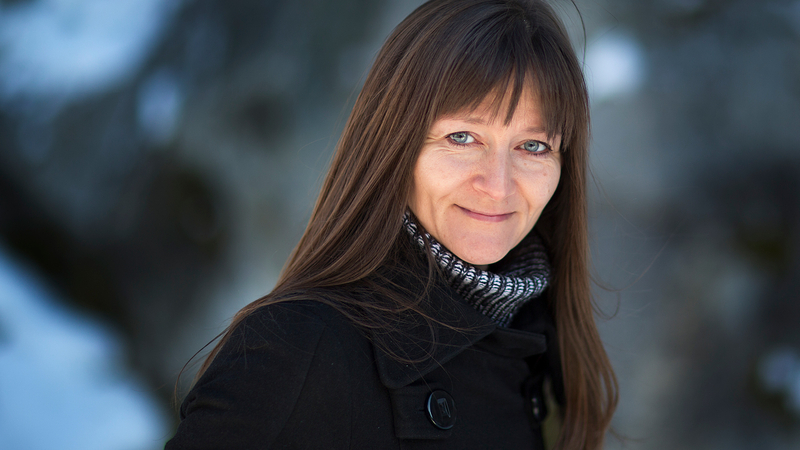Naja Rosing-Asvid

Rationale
How do you form friendships with children across language barriers and old-fashioned prejudice with “us and them” ways of thinking? Naja Rosing-Asvid tackles such topics as they relate to ingrained prejudice in adults in Pipa Sulullu qaangiipput (“Pipa and Suluk Cross the Line”, not published in English). It illustrates the problematic relationship of two families of sparrows – the snow buntings and the brown towhees – who live right next to each other. Despite these two types of sparrows being very similar, eating the same insects and singing and chirping in almost the same way, there seems to be an invisible line between the two families, especially the adults, and each family has the worst prejudices about the other sparrow family. The two “protagonists”, Pipa and Suluk, one from each sparrow family, inadvertently cross the line and begin to understand that they’re very similar and can easily be friends. That’s the important message of the book. We know linguistic challenges very well, both in Greenland and in the other Nordic countries, and the importance of us making an effort to understand each other, and that we can easily be friends in spite of our differences.
The dialogue between the birds is conveyed in cartoonish speech bubbles, which make the spreads lively and inviting. This is an easily comprehensible way of explaining a difficult subject to little ones and standing up to adult prejudices. Naja Rosing-Asvid manages to warmly communicate the problem to the very youngest children.
How the baby birds learn to feel suspicious of “others” becomes obvious in the first spreads, where the parents and grandparents are busy gossiping and airing their unassailable knowledge of their bird neighbours. But one day a big raven chases the little brown towhee Pipa and the little snow bunting Suluk, who find themselves involuntarily stuck together in a rock crevice. The shared danger forces them to communicate, and they discover that, with a little effort, they can understand each other well.
In Pipa Sulullu qaangiipput, Naja Rosing-Asvid takes the reader along a humorous route to visit such universal themes as prejudice, the “us-and-them” mentality and friendship across language barriers.
It is fully illustrated with warm, full-page illustrations full of whimsical details for exploration. The dialogue between the birds is conveyed in cartoonish speech bubbles, which make the spreads lively and inviting. The main text is also colloquial in tone, with many exclamations and questions, for example. This form invites detours and discussion while reading.
A message can often reach a wider audience with the use of humour, and Naja Rosing-Asvid has approached the issues of culture and language, which she herself is deeply committed to, in a way that manages to excite and to initiate ideas and conversations between children and adults.
As a reviewer in the Danish magazine Børn og Bøger writes, it is “a beautiful cartoon epic where reason prevails and prejudices and their companions disappear”.
Naja Rosing-Asvid is an architect and visual artist who has published a number of children’s books since 2012, including a series about the little helper spirit Aqipi. She was nominated for the 2015 Nordic Council Children and Young People’s Literature Prize for Aqipi – til sommerfest.